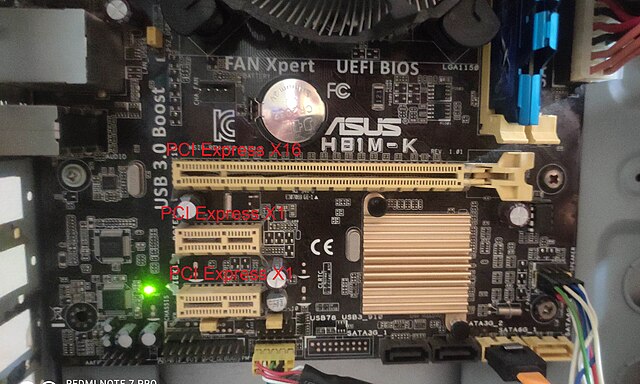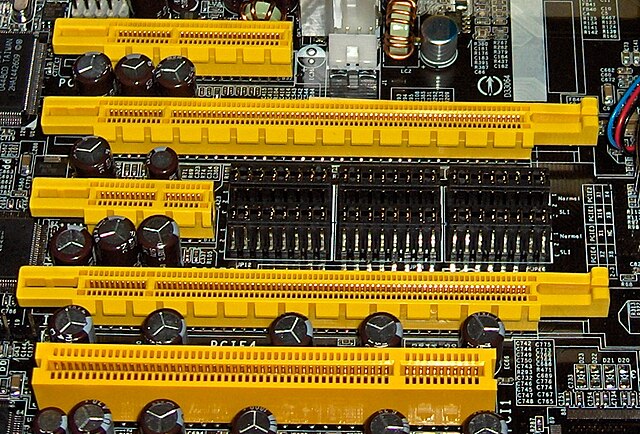The RapidIO architecture is a high-performance packet-switched electrical connection technology. It supports messaging, read/write and cache coherency semantics. Based on industry-standard electrical specifications such as those for Ethernet, RapidIO can be used as a chip-to-chip, board-to-board, and chassis-to-chassis interconnect.
RapidIO - the unified fabric for Performance Critical Computing
PCI Express, officially abbreviated as PCIe or PCI-e, is a high-speed serial computer expansion bus standard, designed to replace the older PCI, PCI-X and AGP bus standards. It is the common motherboard interface for personal computers' graphics cards, sound cards, hard disk drive host adapters, SSDs, Wi-Fi and Ethernet hardware connections. PCIe has numerous improvements over the older standards, including higher maximum system bus throughput, lower I/O pin count and smaller physical footprint, better performance scaling for bus devices, a more detailed error detection and reporting mechanism, and native hot-swap functionality. More recent revisions of the PCIe standard provide hardware support for I/O virtualization.
Two types of PCIe slot on an Asus H81M-K motherboard
Various slots on a computer motherboard, from top to bottom: PCI Express x4 PCI Express x16 PCI Express x1 PCI Express x16 Conventional PCI (32-bit, 5 V)
PCI Express x1 card containing a PCI Express switch (covered by a small heat sink), which creates multiple endpoints out of one endpoint and lets multiple devices share it
The PCIe slots on a motherboard are often labeled with the number of PCIe lanes they have. Sometimes what may seem like a large slot may only have a few lanes. For instance, a x16 slot with only 4 PCIe lanes (bottom slot) is quite common.





